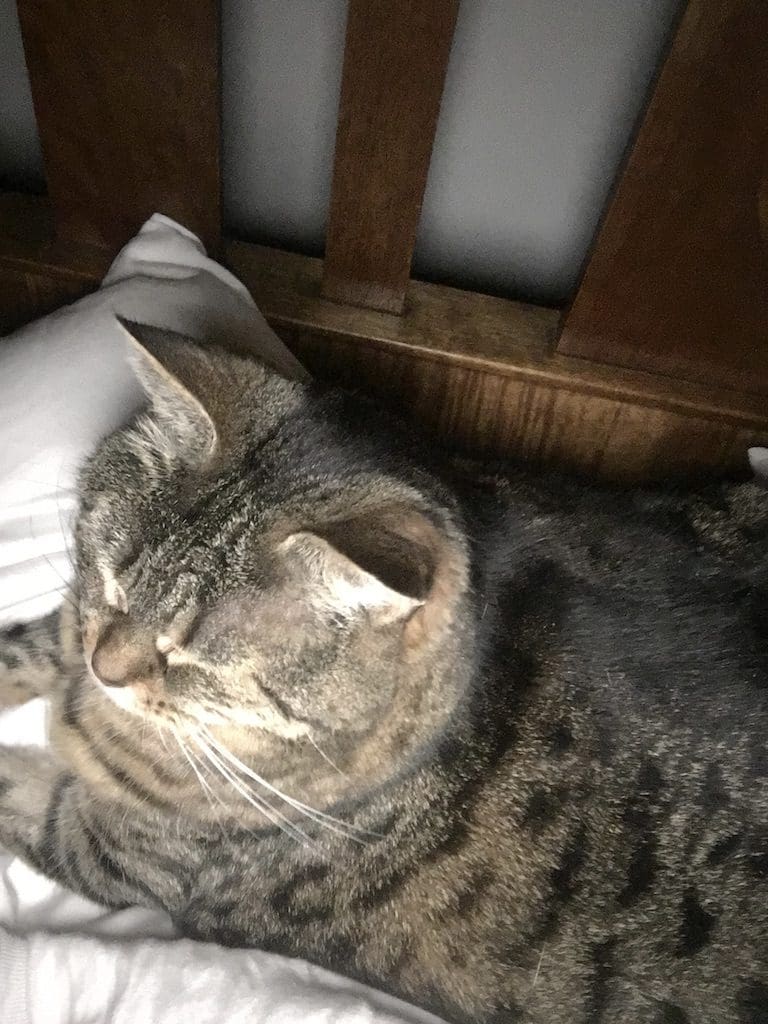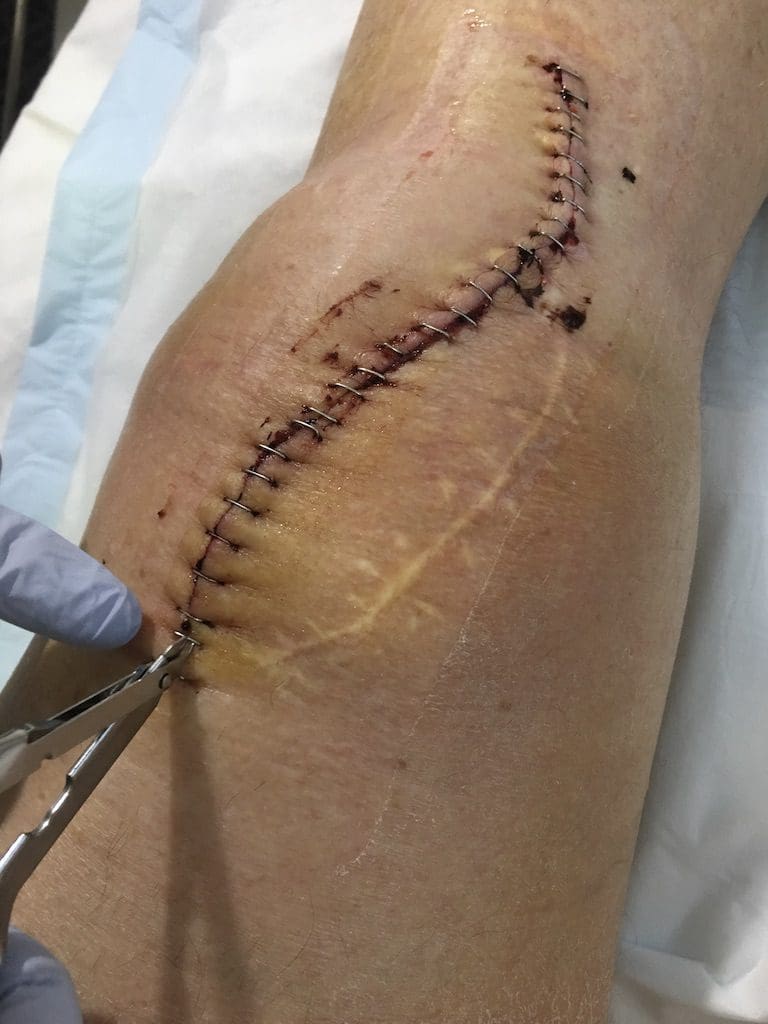Total Knee Replacement – Right Knee – week 2 – home one
Wednesday 15 August 2018. Day 6. A bit of difficulty getting to sleep last night. I still need the sleeping pills. Today, I’m trying a plan of sitting in a recliner with my feet up and ice pack on and going for a two-lap walk of the corridor of our house every hour. We are trying to find a pattern that will work for both of us so Helen is not tied to me and I am not dependant on her. Towards the end of the afternoon, I worked on lifting my right foot as high as I can on each stride (not very high) and pushing off with my right big toe. This appears to be helping bending my right knee.
Thursday 16 August 2018. Day 7. Quite difficult getting to sleep last night but then slept quite well. Pain levels up to 2.5 last night. Will have to revert to a 6-hourly sequence of Panadol to control the pain better. However, given I am able to control the pain from this major operation with a few Over-The-Counter pills is truely amazing. I may have overdone it with my walking yesterday. I will keep it up today plus a few other exercises to bend my knee. My operation was a week ago today. Really concentrating on walking today – knee bend, pushoff, good swing, straight leg finish. I cannot do even one lap. Knee bend exercise – using plastic bag on floor pull heel towards me and relax (10 reps only). Leg lift – use good leg to lift operated leg, lean well back, remove support and hold elevated leg (3 reps only).
Friday 17 August 2018. Day 8. Difficult again going to sleep last night. Today’s exercises are hourly: [right heel on roller pulled as far back as possible with left leg 15 reps; right leg straight leg lifts and hold (4 reps); standing right knee lifts with foot relaxed (20 reps); walk with alternating crutches – right crutch, left leg – left crutch, right leg)] by two sets. Does not sound much but that is my limit. Rest with ice pack until top of next hour. I was thinking of trying the bike today, however, I cannot bend my knee sufficiently to get on the thing.
Saturday 18 August 2018. Day 9. Sleeping a little better. Today’s exercises are two hourly: [right leg straight leg lifts (6 reps); standing right knee push down against blue band (20 reps); right step up onto reebok step assisted with crutches (10 reps); bike (4 holes exposed) unable to make a cycle – (15 reps back, 15 reps forward) very difficult)] by one set. Rest with ice pack.
Sunday 19 August 2018. Day 10. Sleeping little better. Decided to give up on the bike for today. The idea was to increase my knee bend but this did not happen – if anything I’m less able. The strengthening exercises have helped and I can walk a little better with the crutches. Walking without the crutches might not have been a good idea. Today’s hourly exercises will closely follow physio Paul’s exercise sheet [lying static quad (10 reps); lying leg extension over a small roller (10 reps); lying straight leg lift (10 reps); sitting knee bend assisted on roll (10 reps), unassisted on plastic (10 reps) ; sitting leg extension (10 reps); standing lift foot behind (10 reps); standing right knee push down against blue band (20 reps); right step up onto reebok step assisted with crutches (10 reps)]
Monday 20 August 2018. Day 11. Visit to physio Paul of Riverina Physiotherapy Centre. I am to concentrate on 3 things: bend, straighten and lastly strength. For bending – sit on something that supports all of my thigh and allows my leg to dangle – increase the bend with gentle pushes with the other foot – it may take 6-12 months to get a full bend. For straightening – lie on back with leg straight and something under my heel and – lie on front with toes over an edge and lift heel. Use only one crutch. Do away with my orthotics. Do not go in a pool for 5-6 weeks (because of high chance of infection). Last of the staples out this afternoon and the waterproof dressing removed. The wound looks extremely clean. The surprising thing for me was how much these few thing knocked me around – two car trips (physio and gp), staples out, using one crutch.
Tuesday 21 August 2018. Day 12. Slept ok. Paul’s advice yesterday on sleep worked. Today, I’m going to try for exercises on even hours. [sitting knee bend assisted on roll (15 reps), unassisted on plastic (15 reps) ; sitting leg extension (20 reps); standing lift foot behind assisted (15 reps); standing right knee push down against blue band (20 reps); right step up onto reebok step assisted with crutches (10 reps); dangles assisted (10 reps); straighten (60 secs); curls (10 reps)]
Wednesday 22 August 2018. Day 13. Slept ok. A change of plan today. I’ve begun to use a small skateboard in my exercises – 5 minutes of gentle rolling while sitting. Also, sitting of 5 mins in straight back chair with leg straight in front support by heel. Both these exercises begin to hurt after 2-3 mins and are not my favourite things to do. However, between them they are making an enormous difference. My walking is certainly improving.
Thursday 23 August 2018. Day 14. Slept very well.









